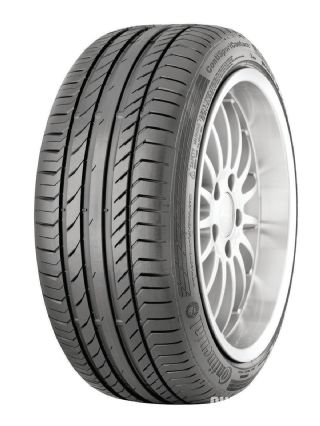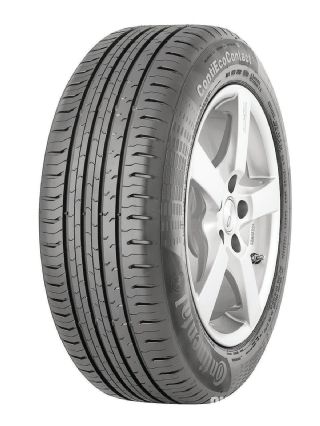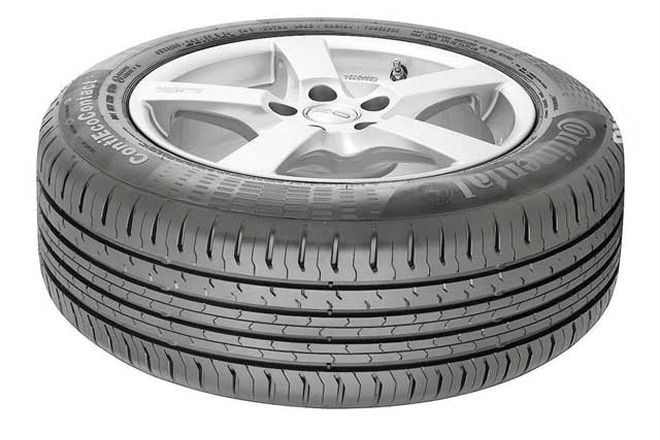ContiSportContact 5
At launch, Continental engineers referred to this tire as “little brother” to the ultra-high-performance ContiSportContact 5 P introduced in the summer of 2010. It replaces the highly popular ContiSportContact 3 and in fact trumps that tire in every area of performance, from handling and braking to rolling resistance.
 |
Continental Tires Contisportcontact and ContiEcoContact 5 - Product Spotlight
|
Continental Tires Contisportcontact and ContiEcoContact 5 - Product Spotlight
The ContiSportContact 5 is a prime example of a complex modular approach (Modular Zone Technology) that the engineers now take toward tire construction, beginning with the tread. This tire incorporates what they call Macro Block Technology, where various tread pattern philosophies are combined to offer a wide range of improved performance characteristics.
Beginning in the center, two center rib patterns were initially considered: one with rigid tread ribs running in solid central bands around the tire’s circumference to offer good braking characteristics and direct cornering; and one where said ribs were broken into flexible blocks, offering maximum contact surface due to the blocks’ adaptable characteristics. The compromise is a strong, unbroken central rib flanked by ribs that are broken into blocks to offer the best of both worlds.
The SportContact 5 propagates Continental’s use of Black Chilli Technology, introduced on the SportContact 5 P, which employs short-chain Visco-Polymers to optimize the tire’s braking frequency through efficient energy absorption. The intended result here is extremely short braking distances on both wet and dry surfaces.
Conversely, the compound also includes long-chain Elasto-Polymers, which offer less energy absorption during free-rolling conditions, for a reduction of rolling resistance and reduced heat build-up, which in turn result in reduced fuel consumption and reduced carbon emissions, and of course higher mileage returns.
The tire’s compound offers a duality of performance: high-grip characteristics under duress (hard cornering and heavy braking), and low-grip characteristics during normal conditions. Essentially, it is actually able to actively adapt itself to the driving situation.
Sidewall design on the SportContact 5 has also been altered versus the SportContact 3, for improved stress distribution and a resulting improvement in steering precision. Seen as a cross section, the SportContact 5 uses a much smoother “multi-radii” sidewall contour that offers homogenous tension distribution, which in turn improves cornering stiffness and contributes to better handling performance.
The sum of its parts? Continental has created a tire that is improved in all areas compared to its predecessor, offering both better performance for sporting driving (steering precision and cornering grip), better safety characteristics (improved wet and dry braking), and improved efficiency (lower rolling resistance during normal conditions for higher mileage and a contribution to reduced emissions).
What can they possibly think of next?
ContiEcoContact 5
Continental’s new offering for the compact car/high efficiency vehicle segments, the EcoContact 5 is aimed at producing the lowest possible rolling resistance (for optimal fuel efficiency and lowered carbon emissions) while still offering the company’s signature braking prowess in dry and wet conditions. To address both of these issues, the engineers designed a new tire from the ground up. Accordingly, they were able to reduce rolling resistance over the outgoing tire by upwards of 20 percent and increase mileage performance by 12 percent, while producing even shorter braking distances on wet roads.
 |
Continental Tires Contisportcontact and ContiEcoContact 5 - Product Spotlight
|
Continental Tires Contisportcontact and ContiEcoContact 5 - Product Spotlight
Like the ContiSportContact 5, the EcoContact uses Modular Zone Technology to allow the Continental engineers to improve the tire in virtually every way. For one, the compound includes “functionalized polymers” that interact strongly with the embedded silica components. In engineer-speak, this facilitates “low hysteresis loss and improves dispersion.” To you, that means the compound offers improved rolling resistance while still maintaining good wet braking characteristics. The manufacturing process also uses a new vulcanization system that improves overall wear resistance to ensure a long operating life.
The EcoContact 5’s tread design also contributes to the tire’s efficiency (through low rolling resistance), with a reduced center pattern depth and a rib structure with adaptive sipes in the center. Rolling resistance is further improved by a flat contour cross section, which contributes to reduced belt movement and deformation—and also resulting in better wear resistance.
And true to the tire’s philosophy of maximum efficiency, thought was even given to the EcoContact 5’s sidewall aerodynamics. Points include an optimized tread-to-sidewall transition and an avoidance of radial ribs in the sidewall. Even the sidewall lettering was taken into consideration. It all adds up to a tire that offers the lowest possible degree of operating turbulence in relation to its overall design.

